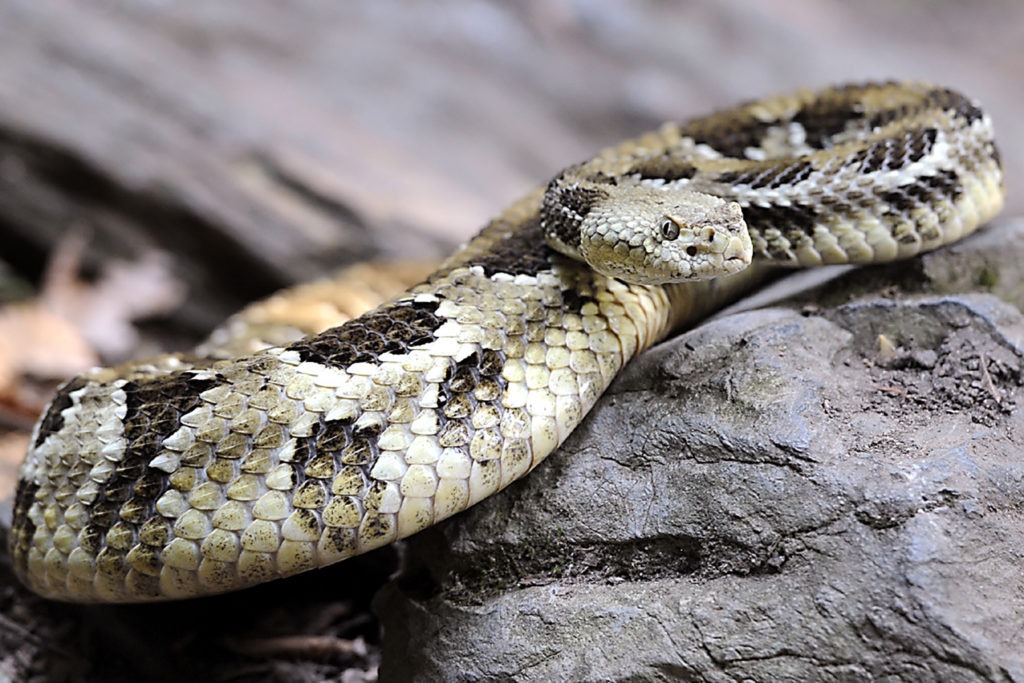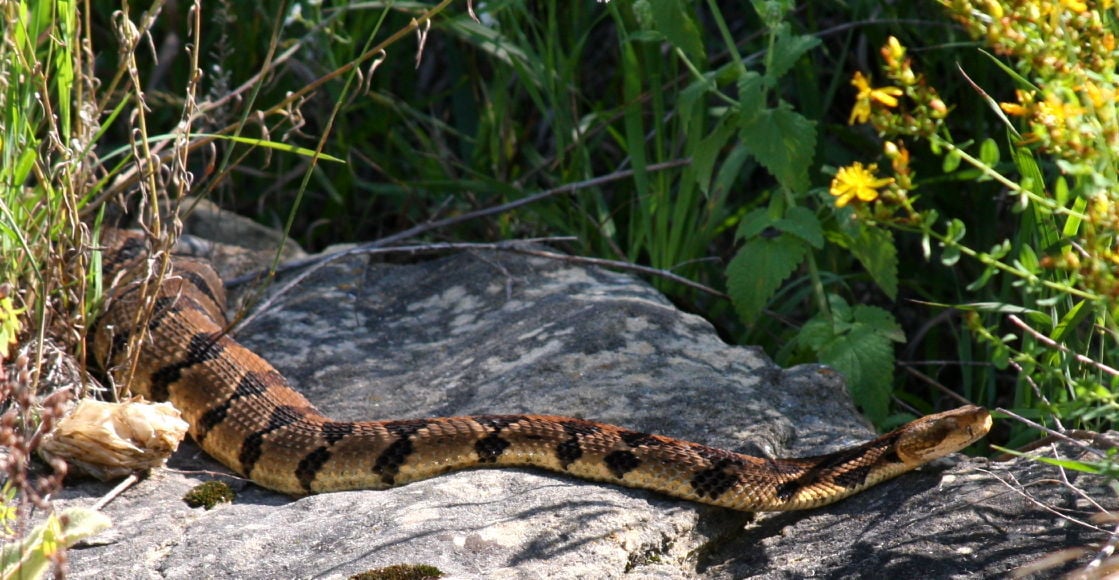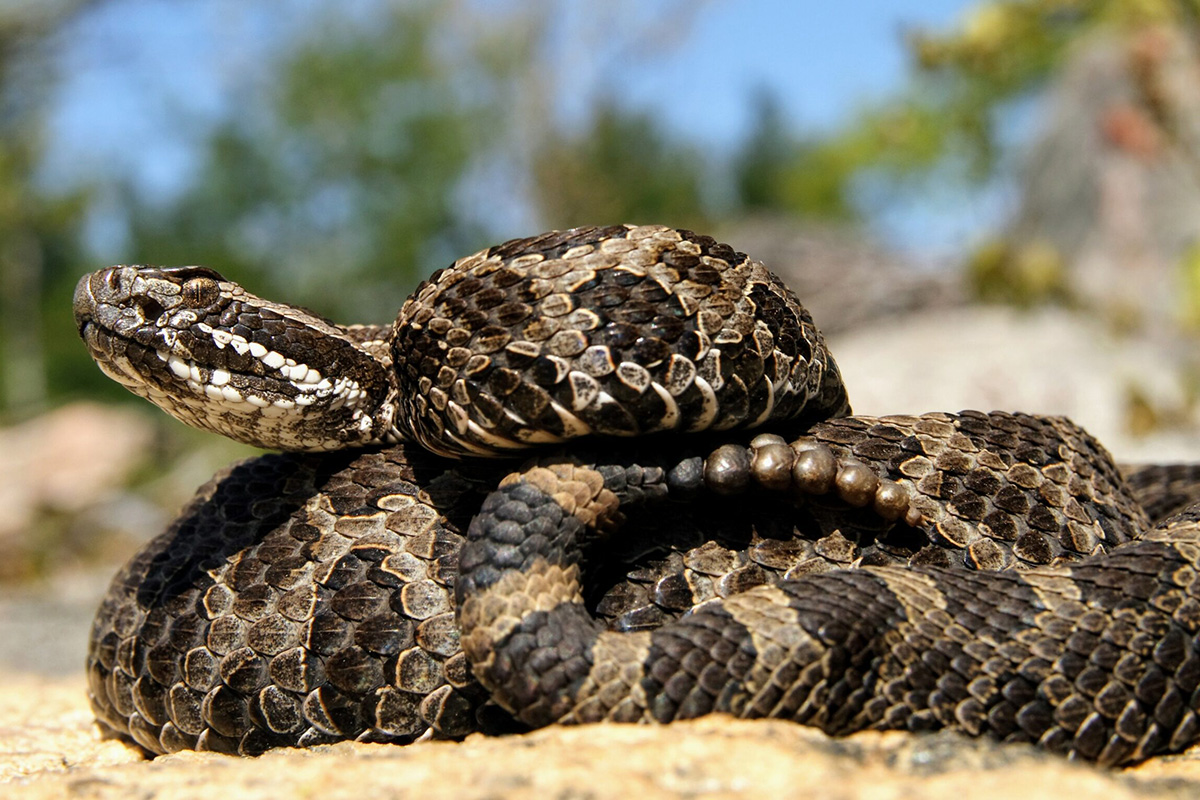Wisconsin is home to two species of venomous rattlesnakes, the timber rattlesnake and the eastern massasauga. Although these snakes are rare, it is important to be able to identify them and understand their behavior to avoid any potential danger.
The timber rattlesnake is the larger of the two and is found along the western edge of Wisconsin, while the eastern massasauga is smaller and primarily lives in wet habitats in southern Wisconsin.
You are reading: Discover The 2 Types Of Rattlesnakes In Wisconsin
Both species are venomous and should be left alone if encountered. In this article, we will take a closer look at the two types of rattlesnakes in Wisconsin, their identifying characteristics, and their habitats.

2 Types Of Rattlesnakes In Wisconsin
Timber Rattlesnake

The timber rattlesnake is one of the two species of rattlesnakes found in Wisconsin. These snakes are large and heavy-bodied, with a characteristic rattle on their tail. They are typically found along the western edge of Wisconsin, living in deciduous forests and areas on the edges of woodlands during the summertime.
Gravid female snakes and juvenile snakes, however, prefer to stay in open areas with bluff prairies (generally near their dens) during the summer because they like it to be a little warmer.
Read more : Discover 13 Animals Roaming Atop Missouris Tallest Mountain
Timber rattlesnakes are not very common in Wisconsin and are officially Protected Wild Animals in the state. They are also listed as a Special Concern Species.
Timber rattlesnakes are not aggressive, and they try to avoid any contact with humans. If cornered and provoked, a timber rattlesnake may respond aggressively. It will usually rattle its tail to let you know it is getting agitated.
The snake may even puff itself up to appear bigger. Upon further provocation, it may strike. It is important to not disturb them as they are dangerous animals and should be left alone.
The Eastern Massasauga

The eastern massasauga is the other species of rattlesnake found in Wisconsin. It is a small to medium-sized snake, with adult lengths averaging 2 to 3 feet.
The eastern massasauga is primarily associated with wetland habitats but can also be found in drier habitats such as marshy grasslands, lake edges, fens, dry prairie and woodland, and forested swampland. The snake is light gray with a color pattern that includes a series of large, dark brown blotches on its back.
Like the timber rattlesnake, the eastern massasauga is venomous and should be left alone if encountered. The eastern massasauga is listed as an endangered species in Illinois, Indiana, Iowa, Minnesota, Missouri, New York, Ohio, Pennsylvania, and Wisconsin.
Read more : Discover The Top 4 Largest And Most Dangerous Snakes In Michigan
Michigan, the only state in which it is not considered endangered, lists it as “special concern”. The species is a candidate for federal listing.
FAQS
1. What are the two types of rattlesnakes in Wisconsin?
The two types of rattlesnakes in Wisconsin are the timber rattlesnake and the eastern massasauga.
2. Are timber rattlesnakes aggressive?
Although timber rattlesnakes are quite venomous and can be dangerous, they are extremely calm and rarely strike.
3. What should I do if I encounter a rattlesnake in Wisconsin?
If you come across any of these species, it is important to not disturb them as they are dangerous animals and should be left alone. The more you agitate them, the more likely you could get bitten. It is also important to not rely on articles to correctly identify a rattlesnake that has recently bitten you. If you have recently been bitten, go directly to the nearest hospital to get help and determine if the snake is venomous.
4. What other snake species are found in Wisconsin?
Wisconsin is home to over 20 species of snakes, many of which are rare. However, many of Wisconsin’s snakes vibrate their tails when they feel threatened, which can make them sound like rattlesnakes.
5. Why are rattlesnakes important for local ecosystems?
Rattlesnakes play an important role in local ecosystems as predators of small mammals and other animals. They also help to control rodent populations, which can have a significant impact on the environment.
Source: https://petstutorial.com
Category: Animals










